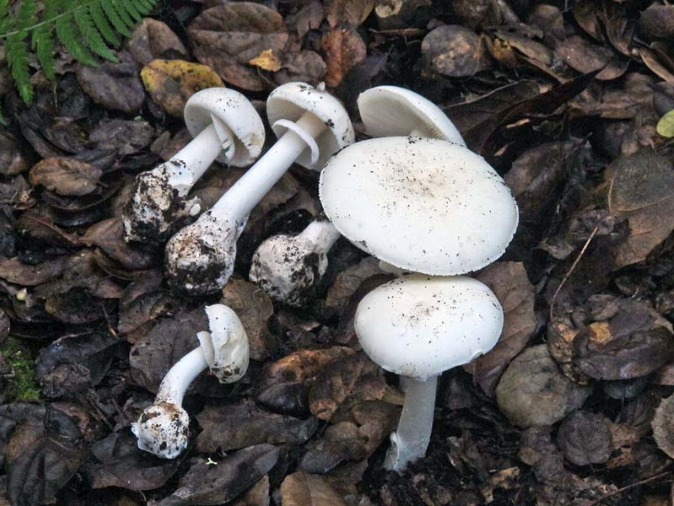Adaptation
The largest adaptation the Amanita phalloides possesses is the lethal dose and type of poison imbued within the mushroom. Attacking the liver and kidneys with a hostile rage, the chemical α-amantin slowly causes certain symptoms such as severe diarrhea, horrible pains in the stomach and a nauseous feeling in the individual. After this initial attack by the poison, the effects seemingly wear off, and the individual believes that all is well and that a simple flu hit them. After a few hours or a day, the poison quickly makes its mark again with even worse symptoms than before and a destroyed kidney and liver. By this point, a coma or death usually follow. Those lucky individuals who have time to make it the hospital either die before surgery and those that make it must receive a liver transplant but even then the recovery time is painful and drawn out. Another poisonous agent, the Poison Dart frog, does not pose a threat to humans but to other organisms as it shields itself from dangerous encounters.

The second major adaptation involves a symbiotic interaction with mainly oak trees, but other species of trees as well . As mentioned previously, the Death cap is a mycohorrizal fungus which means that the fungal hyphae are within the roots of the oak tree. In this mutualistic relationship the oak tree receives nitrogen and other nutrients from the Death cap. The Death cap receives sugars from the photosynthesis performed by the tree. This interaction helps the Death cap to flourish among the ground and spread to other parts of the region where the Death cap can live. In addition, the Death cap utilizes folded gills, separate from the stem to maximize surface area. By maximizing surface area, the fungus can release more spores and obtain a greater amount of nutrients and spread them out faster and more evenly.
<--Back to Habitat On to Nutrition-->
Home